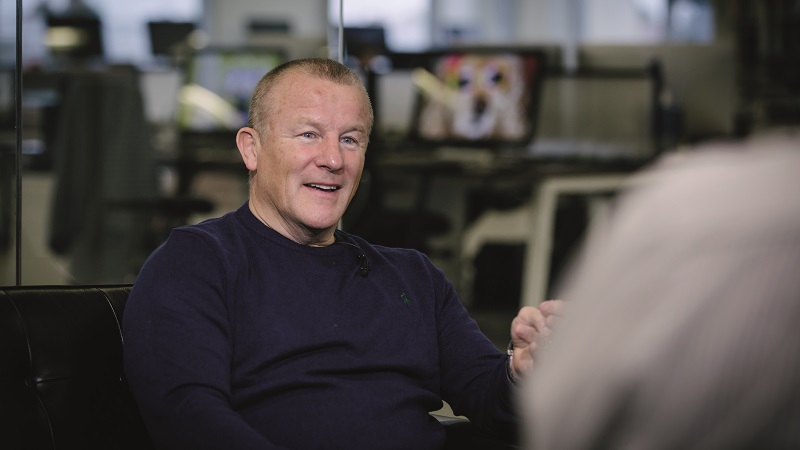The Covid-19 pandemic has shone a new light on many aspects of life, but one thing that has impacted us all is the complexity faced when expected norms are disrupted. Even the apparently simplest of plans – to go to the shops, to eat a meal out with friends, to attend school or college – have been made complex by the health crisis and the national response to it.
While day-to-day life is being disrupted in the near term, spare a thought also for the two and a half million people who are expected to reach retirement age over the next five years. Not only have they got to plan for the immediate uncertainty, they also need to consider their financial needs over the long term, potentially the very long-term during retirement and how their portfolio will support them.
Going back 10 years and before pensions freedom, while the problem was not simple, it was at least simpler. The retiree bought an annuity at a fixed price and lived off an income that was fixed in absolute or relative terms. The retirement date was known and received wisdom held that, in the run-up to that date the portfolio was rebalanced into lower-risk assets to manage volatility ahead of the annuity purchase.
Many more variables
Today there are many more unknowns – the retirement date or phasing, the ability to crystalise different pensions or portions of pensions at different times, changes to clients’ desired lifestyle in retirement, client longevity, their health and end-of-life care costs and so on. These all mean that the shape of client needs are much more likely to vary over time – and thus the demands on their portfolio – all the while exposed to market risk.
So how do you prepare a client and their portfolio for such a long period of uncertainty? For a long time, the discipline of cashflow planning has been key in helping clients develop a strategy to invest, and ultimately access, their portfolios.
Most of these tools use straight-line or deterministic assumptions around how the portfolio will behave. Some work backwards from the stream of expenditure required over, say, the next 30 years to calculate the net return needed and then build a portfolio designed to deliver that return.
Stress-testing portfolios
While simple and helpful in terms of client understanding, the problem is this approach does not account for the risk of the portfolio experiencing returns that are not fixed over time. To address this, some approaches have introduced the idea of stress-testing a portfolio – typically at a time of the client’s choosing and to ask the question, ‘what-if’ markets were to fall at this point. Some methodologies look at different levels of loss while others ask what would happen if a portfolio were to experience an event or period similar to 1987, 1991, 2000 or 2008 …
While stress testing is good, the problems with all these approaches is that:
* They do not reflect the risk of the client’s actual portfolio and so the likely quantum and extent of any losses modelled may significantly under or overstate the real risk;
* They only simulate the replication of a given event or period and not the vast and complex range of stresses, all of them different, which could be placed on the portfolio over time; and
* If the client is withdrawing money from their portfolio every month while markets are falling, the ‘sequence of returns’ risk – that is, the acceleration in portfolio losses – may be significantly underplayed.
Range of outcomes
How then do you help the client and their portfolio plan well for a complex and uncertain future? The answer lies in preparing the client for a range of reasonable outcomes – including stressful ones. The Monte Carlo method of taking a large number of random potential outcomes for each future period based on an expected distribution is very helpful here.
First, it links directly back to the portfolio, its asset allocation and the value-at-risk the client agreed was a good match for their risk profile. The risk profile drives the expected average return and volatility and informs the distribution around this, including the likelihood of bigger losses than have been seen historically.
Second, it can draw a statistically robust number – usually thousands – of the almost infinite number of performance paths the portfolio might take each month over the course of a 30-year plan. Some of these might look a bit like those of previous downturns but most will not. The client can plan for an average through these paths, but they can also be prepared for a series of poor returns, which might be the average of the worst 5%, or be pleasantly surprised by a higher than average return.
Third, monthly Monte Carlo models can take into account the reality of the impact of monthly cashflows – whether this is income being drawn down or charges or income taxes being applied – resulting in a much more accurate assessment of the probable range of outcomes and the assets available to meet future expenses.
While three lines – ‘Plan for this’, ‘Be prepared for this’ and ‘Be pleasantly surprised for this’ – are not as simple as a single deterministic one, they do provide a way for advisers to engage with clients around a more realistic assessment of the returns and the risks likely to be produced by their portfolio. Armed with that understanding, advisers and clients will be better equipped to navigate the much more complex times in which we now live.
Ben Goss is CEO at Dynamic Planner










